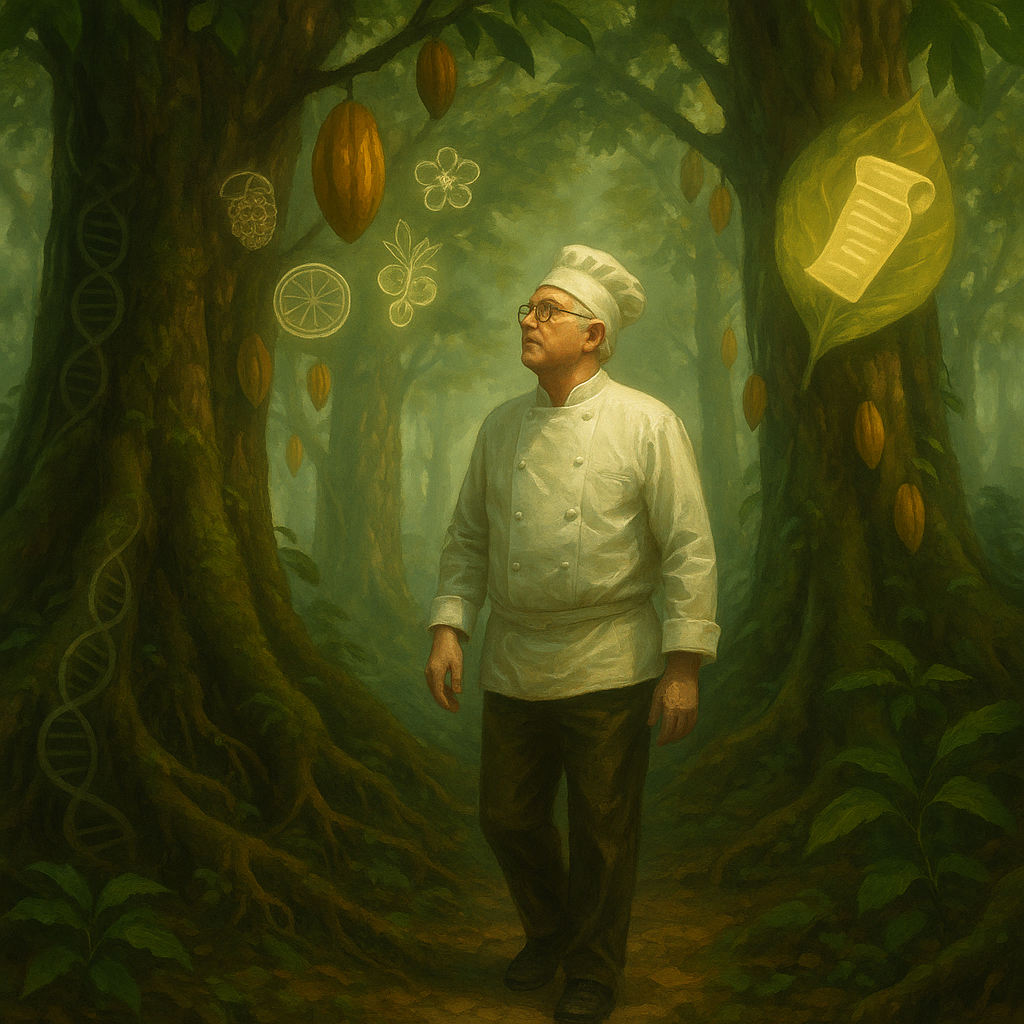.jpeg) A Living Legacy in the Rainforest As a chocolatier, educator, and international chocolate consultant, I’ve spent over 25 years immersed in the world of cocoa — from the fermentaries of Ghana to the mountain co-ops of Haiti. But it’s the quiet, enduring stories of Peru and Ecuador that have stirred something deeper in me lately.
A Living Legacy in the Rainforest As a chocolatier, educator, and international chocolate consultant, I’ve spent over 25 years immersed in the world of cocoa — from the fermentaries of Ghana to the mountain co-ops of Haiti. But it’s the quiet, enduring stories of Peru and Ecuador that have stirred something deeper in me lately.
Stories of centenarian cocoa trees — over 100 years old — still flowering, still fruiting, and still gifting us the most nuanced, layered flavour profiles imaginable.
These trees aren’t relics. They’re living heritage.
And the farmers who tend them? They’re not just growers. They’re guardians of flavour.
The Soul of a Tree: Why These Ancients Matter
In an industry often obsessed with yield, uniformity, and efficiency, these old trees stand in beautiful defiance. They don’t give high volume. They don’t grow fast. But what they offer is irreplaceable:
Rare, heirloom genetics – the raw material of true flavour diversity
Naturally built resilience – from decades of adaptation within biodiverse ecosystems
Deep, expressive flavour – terroir-driven notes from citrus to floral to nutty and spiced
This isn’t just cocoa. It’s living flavour history — each pod telling a story shaped by time, soil, memory, and care.
I Haven’t Been Yet — But I Will
I haven’t yet walked beneath those canopies in Piura or Esmeraldas. But I’m working on it.
I’m currently developing plans to collaborate directly with cocoa communities in Peru and Ecuador — not to impose new systems, but to support and strengthen traditional practices, especially around post-harvest processing and flavour preservation.
This work will be grounded in mutual respect. Because when it comes to understanding the soul of the tree, the farmers know more than the textbooks ever will.
The Quiet Courage of Choosing Heritage
These trees demand more care. They yield less. They test your patience.
But these farmers — often working plots passed down through generations — make the bold choice to preserve them anyway. It’s a quiet form of resistance. And it’s working.
In the shade-grown forests of the Andes, in the lowlands of the Maranon, farmers are holding onto *legacy*, not just land. Their pruning methods, fermentation know-how, and agroforestry wisdom are not just traditions — they’re acts of cultural conservation.
What This Means for the Future of Chocolate
One day soon, I’ll walk among those 100-year-old trees. And when I do, I’ll be walking through:
A genetic bank for future cacao breeding
A flavour museum for sensory exploration
A botanical archive of resistance and resilience
And I’ll give thanks — as a chocolate maker, a consultant, and a human being — for the choices these farmers make every day.
What Can You Do?
If you care about flavour, sustainability, and the stories behind the bar, here’s how you can help:
Try single-origin bars from Peru or Ecuador. Look for Piura, Esmeraldas, or Maranon origins on the label.
Host a tasting session focused on heirloom or heritage cocoa.
Tell this story. Share it with chocolate lovers, chefs, educators, and friends. Flavour has roots — and they go deep.
“Flavour isn’t just crafted in the kitchen. It’s inherited, protected, and passed down — one cocoa tree at a time.”
#HeirloomCocoa #FlavourMatters #PeruCacao #EcuadorCacao #ChocolateWithPurpose #GuardiansOfFlavour #CocoaHeritage #BeanToBar #OriginMatters
